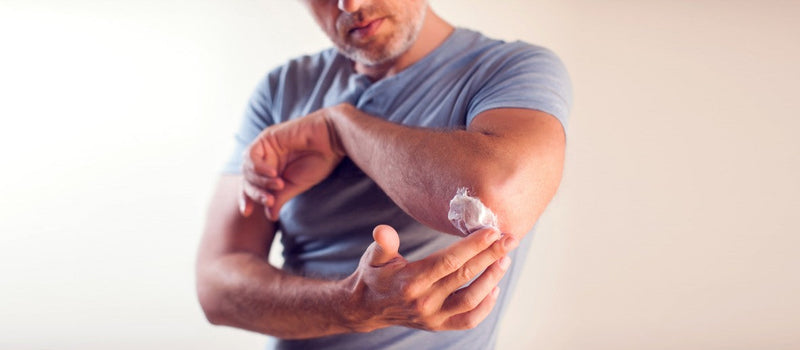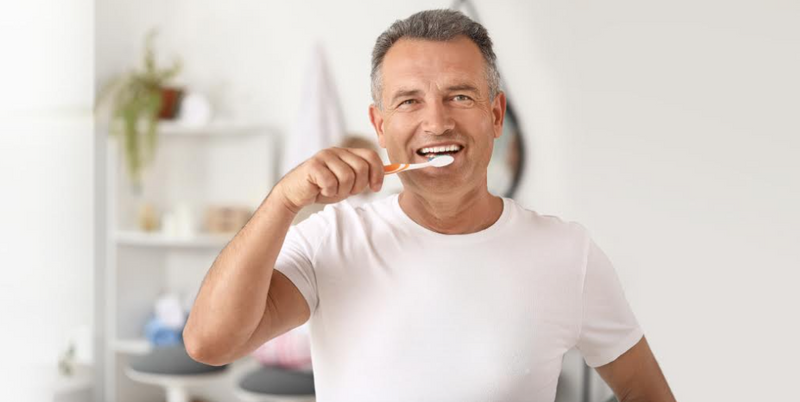

If you have diabetes, there is a good chance your skin shows it. Skin problems may be the first sign that you have diabetes. The American Diabetes Association (ADA) points out that some diabetes skin conditions may be simply cosmetic, which means they are harmless. Others are cause for concern. The good news is that most diabetes-related skin conditions can be prevented or treated if caught early. [1]
General diabetes skin conditions
The following skin conditions are not unique to those with diabetes; anyone can be susceptible to these. However, if you have diabetes, you can get them more easily, so you want to be watchful and see your doctor if they persist to learn how to treat them:
Dry itchy skin
Dry diabetic skin results from high blood glucose levels in the bloodstream, which causes the body to pull fluid from its cells so that it can produce enough urine to remove the excess sugar.[2] This leads to dry skin on the legs, elbows, feet, and other areas. In fact, dry skin may be the first sign someone has diabetes. An estimated 11.3 percent of people with diabetes report dry itchy skin.[3]
Bacterial infections
Diabetes increases the risk of bacterial infections. Hyperglycemia or high blood sugar (glucose) is a severe problem if you have diabetes. Glucose is the preferred carbon source of several bacterial pathogens, and hyperglycemia escalates bacterial growth and virulence.[4]
Infections can lead to swollen, red and painful skin, which requires antibiotics for treatment. Common bacterial infections caused by diabetes include: [5]
· Styes (infections of the glands of the eyelid)
· Boils (common, painful infection of a hair follicle and the surrounding skin)
· Folliculitis (infections of the hair follicles)
· Carbuncles (deep skin infections and the tissue underneath
· Infections around the nails
Fungal infections
Diabetes skin conditions also indicate an increased risk for fungal infections, which also are a result of high blood sugar along with a weaker immune system. The culprit in fungal infections of people with diabetes is often Candida albicans. It is a yeast-like fungus that can create itchy rashes of moist, red areas surrounded by tiny blisters and scales. Common fungal infections include athlete’s foot, ringworm, and vaginal infections.[6]
Diabetes rash
If you are diabetic, you are at risk of developing a skin rash. It can cause irritation, skin redness and other symptoms. It is estimated that 1 in 3 people with Type 1 or Type 2 diabetes will develop a skin rash or some other skin problem. [7]
The high blood sugar levels associated with diabetes often is the cause.[8] A rash also may be the result of medications taken for treatment diabetes. If this is the case, the medications will need to be adjusted. Rashes that only affect people with diabetes and usually go away when blood sugar is managed include:
Diabetic blisters: Though generally rate, they are usually painless and normally heal on their own without leaving scars. They most often appear on legs, feet and toes. They often are described as looking like blisters resulting from a burn, only without the pain. They can be as large as six inches but are normally smaller. [9]
Diabetes-related dermopathy: Due to changes in the small blood vessels. Diabetes-related dermopathy appears on the lower part of the legs. The skin lesions may come and go with time. They often look like light brown, scaly patches and may be mistaken for age spots.[10]
Digital sclerosis: The skin condition causes hardened, thick waxy skin on the backs of hands. Digital sclerosis can cause joints of fingers to stiffen, which can be painful and make movement difficult. The treatment is to bring glucose levels under control. [11]
Necrobiosis lipoidica (NL): Generally, appears as patches or lesions on the lower legs or shins. Appears as shiny, raised flushed patches of skins. The condition can be itchy and painful. [12]
Diabetes Foot Syndrome: A diabetic complication that can cause blisters or foot ulcers. They take a long time to heal and can become infected.
There are other rashes not caused by diabetes, but if you are diabetic, you are more likely to get them. They, too, can be a sign of prediabetes: [13]
· Acanthosis nigricans (AN): A skin condition characterized by dark, velvet-looking bands of discolored skin.
· Granuloma annulare: A skin disorder that most often causes sharply defined ring-or arc-shaped skin areas. Rashes generally occur on fingers, hands, feet and ears. Rash may be red, reddish-brown or skin tone.
· Eruptive xanthomatosis: Happens when diabetes is out of control. Demonstrates firm, yellow pea-like enlargements in the skin, which have red halos and may itch.
· Vitiligo: Cause the skin to lose pigmentation.
· Skin tags: These are small brown bumps on the skin, which generally have no symptoms. There are others, which can be unsightly as well as cause pain and itching.
Diabetes skin care
You will want to manage your blood sugar levels and maintain good diabetes skin care to lower the risk of getting these skin conditions. But see your doctor if something on your skin does not look right.
· Keep skin clean and dry.
· Take short lukewarm baths or showers and try not to scrub too hard when bathing or showering.
· Make sure to dry your skin everywhere after washing. Dry well patting gently.
· Check places where water can collect, like under the arms, under the breasts, between the legs, and between the toes since the extra moisture can cause a fungus to grow.
· Treat cuts right away. Wash minor cuts with soap and water. Only use an antibiotic cream or ointment if your doctor says it's okay. See a doctor right away if you get a major cut, burn, or infection.
· Check your body after you wash for any dry, red, or sore spots that would become infected.
· Check your feet every day for cuts and sores.
· Use a humidifier during winter to add moisture back into the air.
· Moisturize your skin. Best to moisturize right after shower or bath to lock water into your skin.
For moisturizing consider EASE-Z Diabetics’ Dry Skin Therapy Lotion and Diabetics’ Dry Skin Therapy Foot Cream. The over-the-counter products were developed specifically to relieve and protect dry, cracked skin associated with diabetes. They uniquely feature active Zinc Acetate to relieve and protect. They are unscented and non-greasy for added comfort. Learn more about Ease-Z.
[1] “Diabetes and Skin Complications,” American Diabetes Association, Accessed January 5, 2025. https://www.diabetes.org/diabetes/skin-complications
[2] “Diabetes and Your Skin,” CDC, Accessed September 10, 2023. https://www.cdc.gov/diabetes/signs-symptoms/diabetes-and-your-skin.html?CDC_AAref_Val=https://www.cdc.gov/diabetes/library/features/diabetes-and-your-skin.html
[3] Kleinman, Roberta, “Diabetes & Skin Care for Winter,” ADW Diabetes, January 23, 2023. https://www.adwdiabetes.com/articles/diabetes-skin-care-winter
[4] Darwitz BP, Genito CJ, Thurlow LR. 2024. Triple threat: how diabetes results in worsened bacterial infections. Infect Immun 92:e00509-23. https://doi.org/10.1128/iai.00509-23
[5] “Diabetes and Skin Complications,” American Diabetes Association
[6] Ibid
[7] “Diabetes Rash & Other Skin Conditions,” Cleveland Clinic, Accessed January 5, 2025. https://my.clevelandclinic.org/health/articles/12176-diabetes-skin-conditions
[8] Ibid
[9] “Everything You Should Know about Diabetic Blisters,” Healthline, Accessed January 5, 2025. https://www.healthline.com/health/diabetes/diabetic-blisters
[10] “Diabetes and Skin Complications,” American Diabetes Association
[11] Ibid
[12] Lewsley, Joanna, “What is necrobiosis lipoidica,” Medical News Today, June 22, 2020. https://www.medicalnewstoday.com/articles/necrobiosis-lipoidica
[13] “Diabetes Rash & Other Skin Conditions,” Cleveland Clinic








